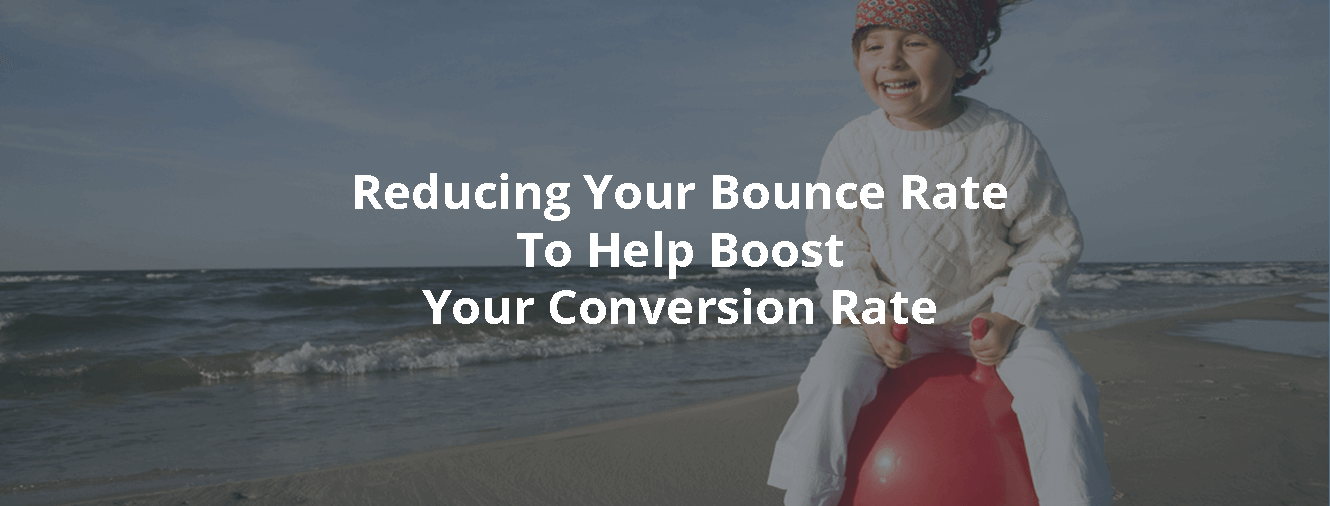
You’ve got your website up and running, you have your products on display, you started blogging and before you know it you have visitors ending up on your website. However as soon as they arrive, without any explanation they’re leaving again.
You have visitors coming and going, maybe after a couple of minutes, maybe even less. All the hours of work you’ve put into creating all that beautiful content seems a waste, the majority of your visitors aren’t staying around long enough to get past your landing page. Many of them visits once and may never return.
You could sit behind your computer staring at your screen, asking yourself why your visitors are not staying longer, or you can take some action.
This blog post is all about the latter, time to take some action!
We talked about Conversion Rate Optimization (CRO) before, giving you some intro into CRO and giving you the basics of CRO in three simple steps. Today we will dive a little deeper and we will be looking at the Bounce and Exit Rates of your website.
But before we start, let’s first understand what Bounce and Exit Rates are and what the difference between them is.
Bounce Rate: the % of visitors, who having entered on a particular page, go no further than that page during their session.
This bounce rate does of course not make much sense on a global basis – as a user can bounce from a page, not from the website. So Bounce Rate is a metric for an individual page. When you hear someone saying “a user has bounced”, it means a visitor:
- typed in a different URL
- hit the back button in his or her browser
- closes the browser window or tab
- click on an external link
- had a session timeout
The pages you probably want to address first when looking into their bounce rates are:
- High-traffic pages–pages that most of your visitors see
- Pages, where you are attempting to make conversions, happen
- Landing pages that you’re sending paid traffic to through ads
Exit Rate: Exit Rate is specific to each page, it’s the percentage of people who leave after viewing that page.
Your exit rate lets you know the last page that visitor viewed before they moved on. A very high Exit Rate on a specific page can be a red flag.
For example, if your product detail page has one of the highest exit rates, you’re probably not explaining the true value of your product with your visitors.
To explain the difference between Bounce Rate and Exit Rate a bit more: if a visitor directly comes to blog post X via a Google search result and exits without going any further, this visitor bounced from the site and Exited from blog post X. But if a visitors comes to blog post X, to blog post Y, to blog post Z and then leaves, this visitor has not bounced but the visitors exit contributed to the Exit Rate of blog post Z.
How to find your Bounce Rate?
Trying to find pages with high bounce rates is something which can be achieved very quickly if you’ve setup Google Analytics on your website. The standard view in Google Analytics will give you your site’s overall bounce rate, but if you go to Behaviour > Site Content > All Pages you can dig deeper into the individual bounce rates of pages. Analytics can also deliver insights regarding where this traffic is coming from, maybe there is a certain website linking to a “wrong” page on your website?
Once you’ve identified the pages on your site with the highest bounce rates, it’s time to start figuring out why your visitors aren’t sticking around on your website. We can use two different things for this:
- User testing: figure out what users are doing on your site. The ability to observe how users interact with your site is invaluable in determining the cause of high bounce rates. There are a couple of companies out there who can really help you with this. For example, CrazyEgg heatmap is an amazing tool for this, by looking at a heat map of your website you can see where your visitors are clicking and can help you understand their behaviour. For example, it might reveal that only 25% of your visitors are able to see your call to action.
- User surveys: You can add user surveys to your website and ask your visitors what they are looking for and whether they can find it. Or you can go to places where your visitors are gathering and ask them to perform certain actions on your website and record how they are going through your site. Analytics and testing user testing will only tell you so much, sometimes you can only figure out by just asking your visitors directly.
What factors make visitors exit your site?
Now we figured out, which pages are harmful to the visitors experience, it is time to start asking the question what elements on those pages make visitors want to exit your site. Here are some of the most common errors which might lead to this (and how to improve them):
- Attracting the wrong users
The person visiting your page is maybe even more important than the page itself. You need to question yourself, how is the user coming to my site? Is the right person visiting your site? There might be a case that the wrong set of an audience (remember those buyer personas?) is coming to your site and they obviously can’t find what they are looking for.
So the first thing you need to do is to attract and market to the right set of audience, your advertisement, your keywords in Google Adwords, they should all exactly represent you. The users coming to the website should not come on a false promise of what the website is not about because then the users will always leave. - Design of the website
The design of the website is important for making conversions. A well-designed website helps to create trust in the user. When a visitors lands on your page and it is full with cheesy stock images and you’re using Comic Sans as a font they will be unimpressed. Never underestimate the power of an attractive, easy-on-the-eyes website compared to a cluttered eyesore. Even the colours that you use on the site should be in line with what you are, your ideologies and aligned to your business goals. Each color has a meaning and will drive a particular kind of behaviour. For example, a blue button at a payment page is a good option, as blue is a symbol of trust and drives positive behaviour. ConversionXL has a brilliant article to dive a bit deeper into what colours are best for converting. - Difficult to use
Maybe the copy of your site makes perfect sense to you, but visitors are left confused or worse, offended. It could also be that users are not visiting more pages simply because they can’t find them. Sadly a difficult to use website is really a subjective term, it could be caused by anything ranging from a poor layout, or poor information architecture, to technical errors or malfunctioning buttons and page errors. Try looking at the log files on your server to spot any errors and by using the user surveys you can try to identify other items. - No call to action
This one is almost on the same level as the previous one, although this is one is even more likely to cause problems with your bounce rate. A visitor arrives to your site one way or another and he or she simply doesn’t know where to go next. For example, it’s not clear to subscribe to you blog, there is no shopping cart to be found etc. Whatever it is that you came up with as the conversion on that page, if your visitor has no idea what you want him to do next, there will be a major problem. - Too many calls to action
Maybe not as bad as having no call to action, having to much call to actions will overwhelm your visitor with possibilities. You might have buttons and links everywhere and the visitor of your page has no idea which one will deliver whatever it is he or she is looking for. Before you know it, they might end up going to your competitor, which offers a simpler less cluttered version and let’s them quickly find what they are looking for.
Your bounce rates are possibly on your website’s list of unique challenges. Still, when attempting to lower your bounce keep the above guidelines in mind. The important thing is this: in order for visitors to convert into users, they have to stick around. In its most basic form, lowering your bounce rate is simply figuring out why people are leaving and fixing it.

